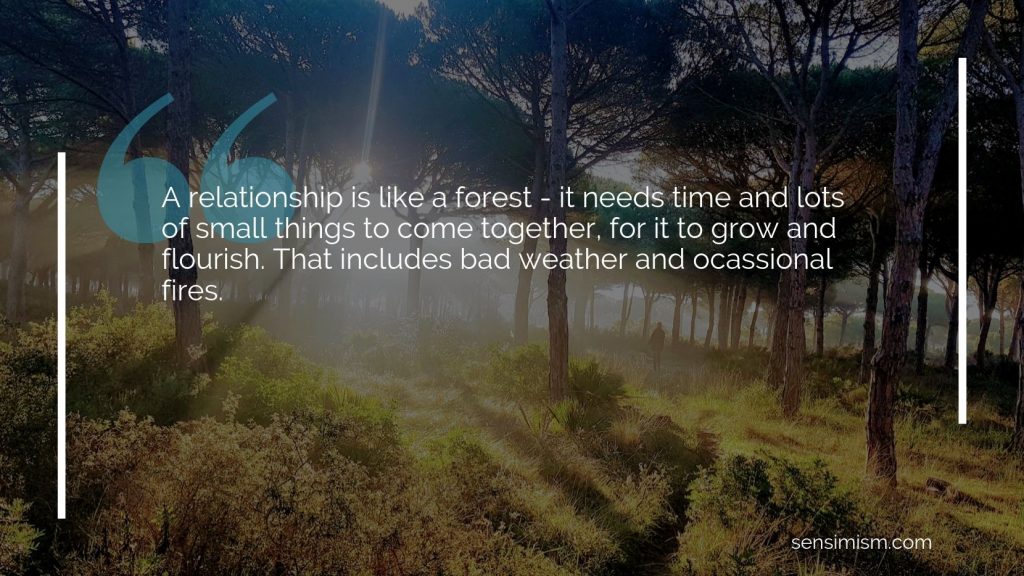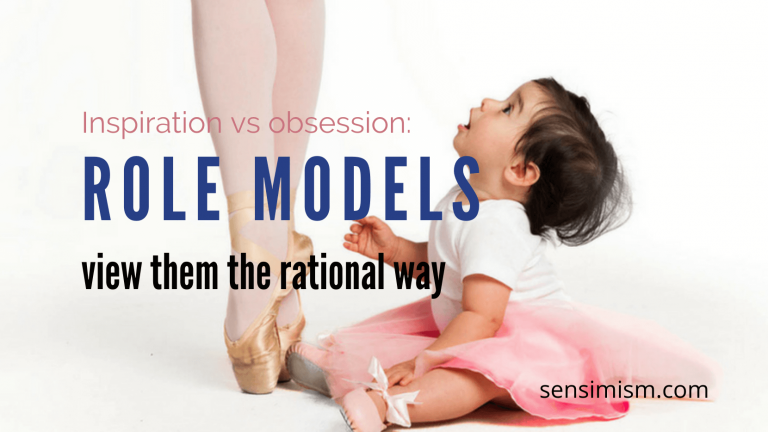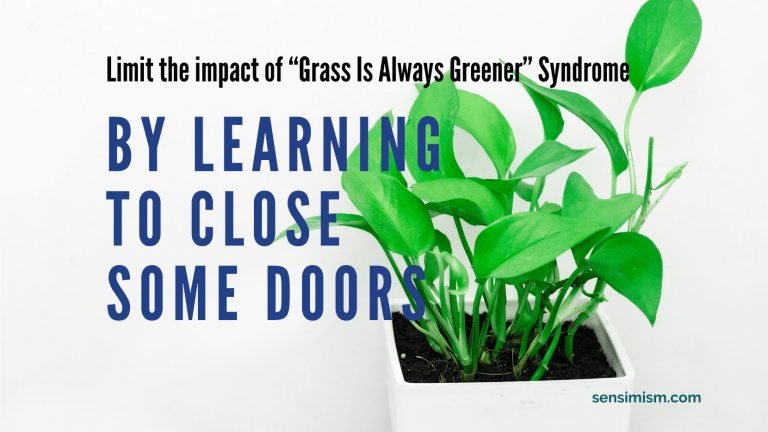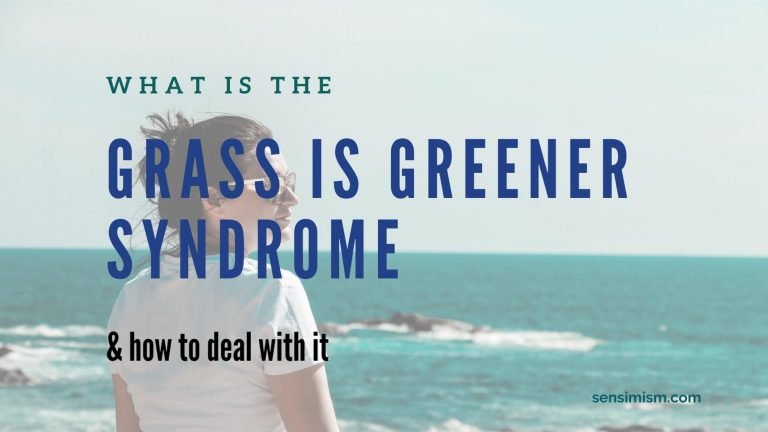Cultivate good relationships through sensimism – grow them like a forest
Or in other words, how nature does it. Let’s explore the makings of a good relationship – what approach should we take to make our relationships last and be happy and balanced. This article will give you a simple change of perspective, that will make the struggles of daily life easier on you.
What is a good relationship? What makes it?
Let’s establish some criteria/definitions. A good relationship should be something that:
- Makes us happy
- Is timeless – if you don’t meet for years and then meet again, you can easily resume as if nothing has changed
- Is unconditional – i.e. you don’t feel that you should maintain it forcefully, do things so that the other person won’t stop caring
How about nature?
There are things that happen in nature that last or are short-lived. Neither is inherently good or bad, but we can learn from both.
The key assumption in sensimism is that good things take time, as in nature. Let’s start there. What good things are there in nature, that meet the same criteria (make us happy, are timeless, are unconditional). I guess everything in nature is unconditional, in relation to us. What makes us the most happy in nature?
According to research, we are wired to be outside, in nature. We are happiest in forests and around water. Let’s start there.
Forests
In what kind of forests do we feel best? Big trees, old, natural, with lots of animals, diversity, waterfalls, creeks, mountains. Doesn’t matter whether it’s tropical, pine trees or leafy, as long as it’s not too artificial and recent (small trees).
Such forests require hundreds if not thousands of years, for the waterfalls to emerge, the mountains to be covered in trees that have seen centuries.
The same research also confirms that spending time by water makes us happy. I dare think that it isn’t just any kind of water body. You don’t feel as happy standing by a small puddle or an artificial lake, as you do by the sea, or a massive natural lake full of life. That also took a very long time to come to be.
Forests into relationships
In the same way, like a forest that needs hundreds or thousands of years to grow, so does a relationship require lots of time to grow into a good one. That time isn’t just spent waiting for it to grow, but actively working on it. As in nature, a forest doesn’t just grow by itself. There are countless little actions that contribute to its growth – from the bugs in the ground, through grass, animals and birds spreading its seeds, to sands from distant deserts influencing a whole chain reaction of climate changes, that help this forest grow.
We play the same role in any relationship – it needs time, lots of little actions and care in order to grow into a lasting, unconditional and happy relationship. We should do everyday little things like the ants in a forest, we should plan and think about bigger actions that will help the relationship grow, like big clouds that feed the forest.
It’s not always an easy process, it has its struggles – bad patches that hinder the progress. Droughts, erosion, frost, volcanoes – growing a forest isn’t easy. And neither is growing a relationship or shall we say maintaining it. It also has it’s rough patches, that will never go away, no matter how hard we try. But realising that they are just a small part of the whole process and that they also create and shape the relationship, will make your everyday struggles so much easier to bear.

This is the idea of sensimism – slow but gradual improvement through sustained effort over longer periods of time will result in big forests – erm, big and happy relationships. Don’t rush it, don’t despair if things aren’t how you want them to be after s few months. Allow time for the relationship to grow and bloom, including its rough patches.






